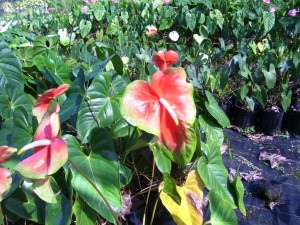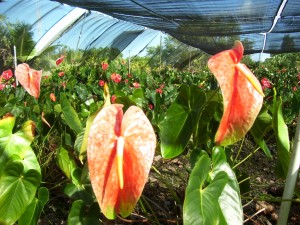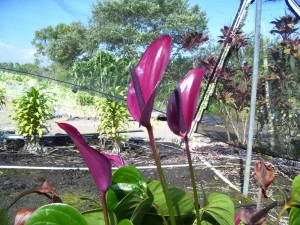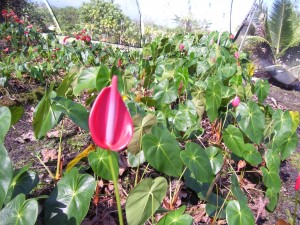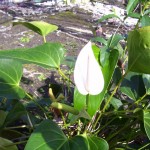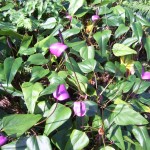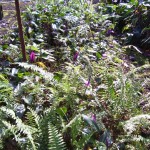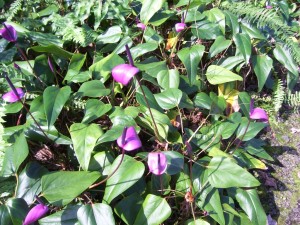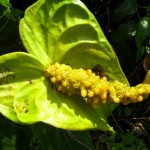Hawaii Flowers: Anthurium, Heliconia, Hibiscus and Orchid
Today I want to tell you about some of my favorite varieties of tropical flowers that grow here in Hawaii. As you well know, Hawaii is a tropical island that never experiences the snows of winter. In fact the temperature seldom drops below 65 degrees. Also, Hawaii has an abundance of sunshine and rain, making it the ideal environment for plants to grow. This ideal environment allows many beautiful varieties of flowers to thrive here.
Anthurium Flowers
The first of my favorite flowers are anthurium flowers. The anthurium was brought here more than a hundred years ago from South America. It produces a lovely flower in many different colors. I have seen colors from red all the way to purple. Most of the time, it is shaped like a heart, though some varieties may be shaped like a tulip. A majority of the varieties are unscented, but a few of the tulip varieties smell great.
Heliconias
Heliconias are some of the most exotic looking flowers in the world. You can just imagine how these flowers look, when one of the varieties has been nicknamed, lobster-claws. The can be found near Indonesia and in South America. But they also seem to enjoy growing in Hawaii. The often produce red, orange or yellow flowers in strange configurations.
Hibiscus
The Hibiscus plant grows all over the world, including in Hawaii. In fact, Hawaii has made the yellow Hibiscus its state flower. Out of all of the flowers that I am describing today, the Hibiscus is the flower with the most conventional shape. But that doesn’t mean that it isn’t a beautiful flower. It comes in many colors, including red, yellow, pink and white.
Orchid
Finally, the orchid is another of those flowers that seems to grow everywhere. But they definitely enjoy it here too. Next to the heliconia, they are one of the most exotic looking flowers. I like how they look almost carnivorous, like they could gobble up a bee that is trying to pollinate it. As far as I know, there is only one edible orchid, the vanilla orchid. And this is grown on Hawaii too.
Obake Anthurium: How To Breed New Obake Anthurium Flowers
I think obake anthurium flowers are the most beautiful variety of anthurium flowers. They come in an incredible variety of colors and usually each flower has a mix of colors rather than being a single solid color. Furthermore, they are much bigger and showier than regular anthuriums. Today, I would like to give you a brief overview of how to breed them. Selective breeding is what growers use to create new and even more impressive varieties of obake anthuriums.
Everything starts with selecting two plants that have interesting characteristics. There are a number of characteristics that a grower may be looking at, size, shape, color and color patterns are all important factors. Generally, if you want to produce a new obake, both parent plants should have the obake characteristics of multiple colors and an elongated spathe. But, sometimes you can’t find an obake with the desired color, so you may choose to have only one obake parent plant.
Once the parent plants are chosen, you have to wait until one of the plants grows a flower and produces pollen. You will then have to gather the pollen. This is done by using a small brush to brush pollen off the stamen into a small jar. If the other parent plant has a receptive flower, you can then dust the pollen onto its stigma. But if the other plant doesn’t have a receptive flower you will have to freeze the pollen until it is ready for use.
Finally, you have to wait until seeds form. This can take a really long time, up to a year or more. Once the seeds have matured, they are planted. And even more waiting is required. You can end up waiting up to two to three years for the new plants to produce flowers. Then and only then will you be able to see if your efforts to produce a new and interesting obake anthurium were successful. If you find an obake anthurium flower that you like, you can take it to a lab and have it tissue cultured and create millions of copies of it.
Anthurium Amnicola aka Tulip Anthuriums
Tulip anthuriums originally hail from the tropical South American country of Panama. In the wild, they like to grow on boulders that are located next to streams. I guess they like hanging out by rivers, just like fly fishermen do.
They are a most excellent variety of anthurium, because they have a pleasant, swell-smelling fragrance and they can produce up to eight flowers a year. Furthermore, they make excellent indoor plants, because they are small and don’t take up a lot of room.
They are an interesting kind of anthurium because of the distinctive shape of their flowers. Instead of being heart shaped like most other anthuriums, they are tulip shaped. They have light purple petals and dark purple noses. I like how they are like tulips with a tropical ambiance. Pure-breed Amnicola produce small, dark-green, spade shaped leaves and small flowers with short stems that generally top out at twelve inches long.
Amnicola has frequently been hybridized with Anthurium Andraeanum to produce a variety of flower colors, which include: purple, red, pink, purple, green, fuschia, lavender and white. Pure-breed amnicola and hybrid amnicola can both produce up to eight flowers a year, so your amnicola could have flowers on it year round. It also produces offshoots quite readily, so it is ideal if you want to produce more plants. You can let the offshoots develop for a while and once they are big enough you can separate them from the parent plant and put them into their own pots.
Some of the hybrids can have interesting names such as Misty Pink, Lady Jane, Pink Elf, and Pink Champagne. Others have less creative names like: Andraecola-1 and Andraecola-2 that were created by taking the first part of Andraeanum and the last part of Amnicola and putting them together. Of course these will probably be given other names at some point.
Amnicola Pictures
Anthuriums
The genus Anthurium is a member of the family Araceae and may consist of up to 1,000 species. Since the members of this genus grow in the Amazon rainforest, which has yet to be fully explored, many new species continue to be discovered each year. Some people mistakenly believe that this genus is also native to Asia, but plants found there appear to have been introduced by humans.
Members of this genus grow in tropical rain forests that receive abundant rain fall. They can be found growing on the ground or on trees. They can grow in many forms, but the most prevalent forms are bushes or vines, attached to trees. They can grow from seeds or as offshoots of parent plants. Offshoots are genetically identical to parent plants, while seeds, even if produced by self-pollination may not be exactly identical to their parent.
All members of Araceae produce an inflorescence or spadix, where both male and female portions of the flower are present. Self pollination does not occur, unless a plant produces multiple flowers at different times because the stigma and the stamen are active at different times. The spadix is surrounded by a spathe, a modified leaf, which is mistakenly thought to be the flower by some, whereas the spadix is the true flower of the anthurium.
Anthuriums may be grown for their leaves or for their flowers. They can be grown outdoors in tropical climates or indoors in colder climates. Warmer temperatures, 65 to 80 degrees, are required, and freezing temperatures will damage these plants. They grow well in moist, but not saturated soil, with a lot of humus. Direct sunlight will harm them, so keep them in bright indirect light.
They are most commonly propagated by taking cuttings. A cutting should have at least two growing nodes that consist of bunches of roots and leaves. It should be placed in a mix of peat moss and perlite or sand and watered regularly. They may also be propagated by seed, but the production of seed will often require an expert’s skill and patience; since the process from pollination to seedling may take up to a year and a half.

